Beijing's Majestic Heritage Unveiled
Explore Beijing's rich history and vibrant culture on this free walking tour, visiting iconic landmarks that tell the story of China's past and present.
Time
3 Hours
Stops
9 Places
Distance
11.7 km
Tiananmen Square
As one of the largest public squares in the world, Tiananmen Square is a must-see symbol of China's historical and political significance.
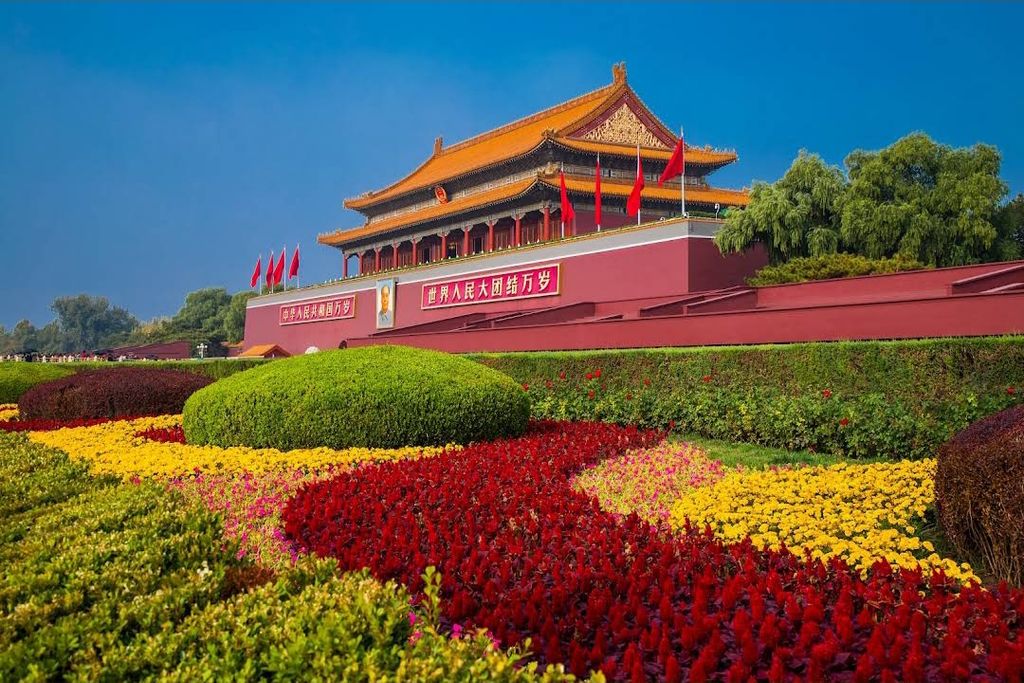
Tiananmen Square (Source: Google Maps)
Tiananmen Square, one of the largest public squares globally, is a historic and political epicenter in China. Established in 1651, it became an essential site during the Ming Dynasty and has played a pivotal role in numerous historical events, including the May Fourth Movement and the 1989 protests. The square is flanked by monumental buildings, including the Tiananmen Gate, which features a portrait of Mao Zedong, symbolizing the Communist Party's authority. The square also houses the Monument to the People's Heroes and the Great Hall of the People, showcasing China's dedication to its revolutionary past and governance. Its vast expanse, capable of accommodating a million people, serves as a gathering point for national celebrations and ceremonies, making it a significant cultural and political landmark.
The Forbidden City
Adjacent to Tiananmen Square, this imperial palace from the Ming and Qing Dynasties is a UNESCO World Heritage Site and a treasure trove of Chinese history.
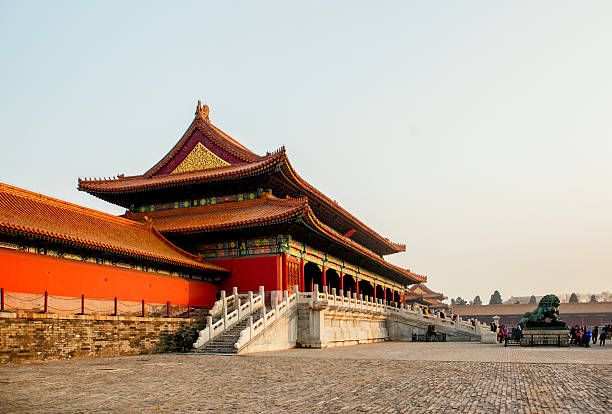
The Forbidden City (Source: Google Maps)
The Forbidden City, a UNESCO World Heritage Site, served as the imperial palace for 24 emperors during the Ming and Qing Dynasties. Completed in 1420, it is a masterpiece of traditional Chinese palatial architecture, featuring over 980 buildings and covering 180 acres. The design reflects the principles of feng shui, with its layout symbolizing the universe's order. The rich colors, intricate carvings, and golden roofs exemplify the grandeur of imperial life. The Forbidden City is also home to the Palace Museum, housing an extensive collection of art and historical artifacts, including paintings, ceramics, and royal treasures, offering insight into China's rich cultural heritage and imperial history. Its significance extends beyond architecture, representing the heart of Chinese civilization for centuries.
Jingshan Park
Located just north of the Forbidden City, Jingshan Park offers panoramic views of the city and the Forbidden City from its central hill.
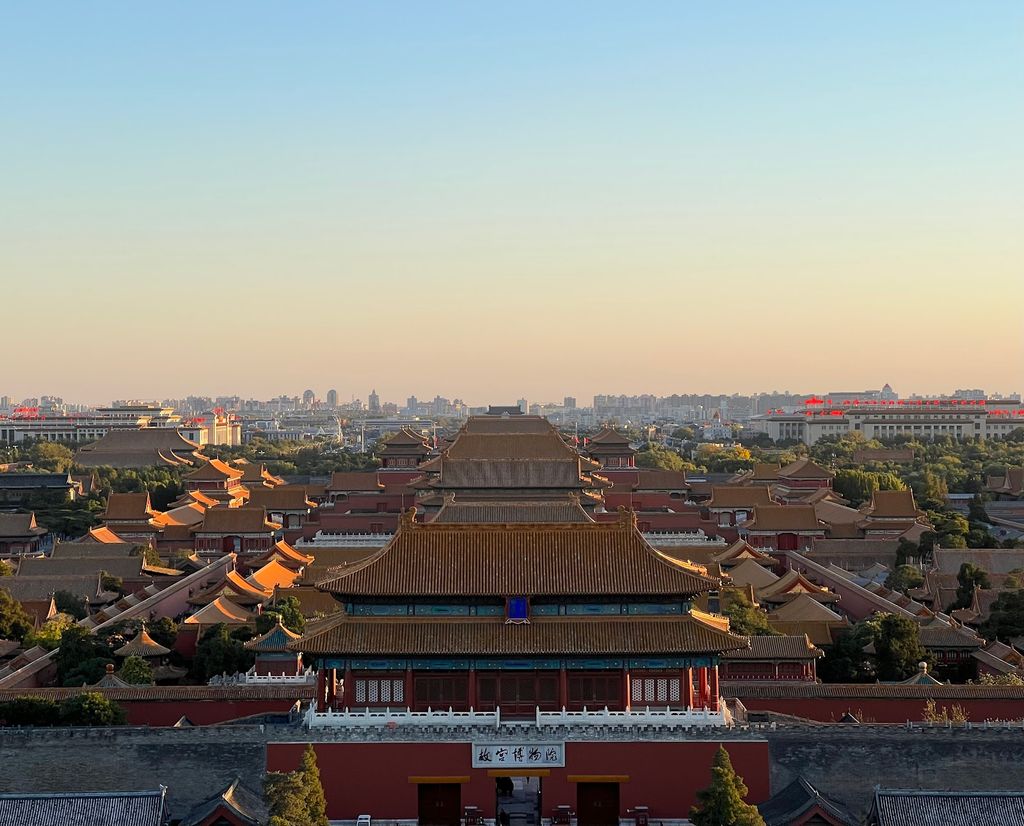
Jingshan Park (Source: Google Maps)
Jingshan Park, located just north of the Forbidden City, is a former imperial garden that offers breathtaking panoramic views of Beijing. Established in the 13th century, the park features a central hill formed from the earth excavated during the construction of the Forbidden City. At its peak, visitors can enjoy a stunning vista of the city skyline and the rooftops of the Forbidden City, making it a popular spot for photography. The park is also home to ancient trees, traditional pavilions, and serene ponds, providing a tranquil escape from the bustling city. Historically, Jingshan Park served as a place for emperors to relax and enjoy nature, reflecting the Ming and Qing Dynasties' appreciation for landscape design and harmony with nature. Today, it remains a cherished public space where locals and tourists alike gather to appreciate its beauty and historical significance.
Beihai Park
A short walk from Jingshan Park, Beihai Park is one of the oldest and most well-preserved imperial gardens in China, featuring beautiful lakes and historic architecture.
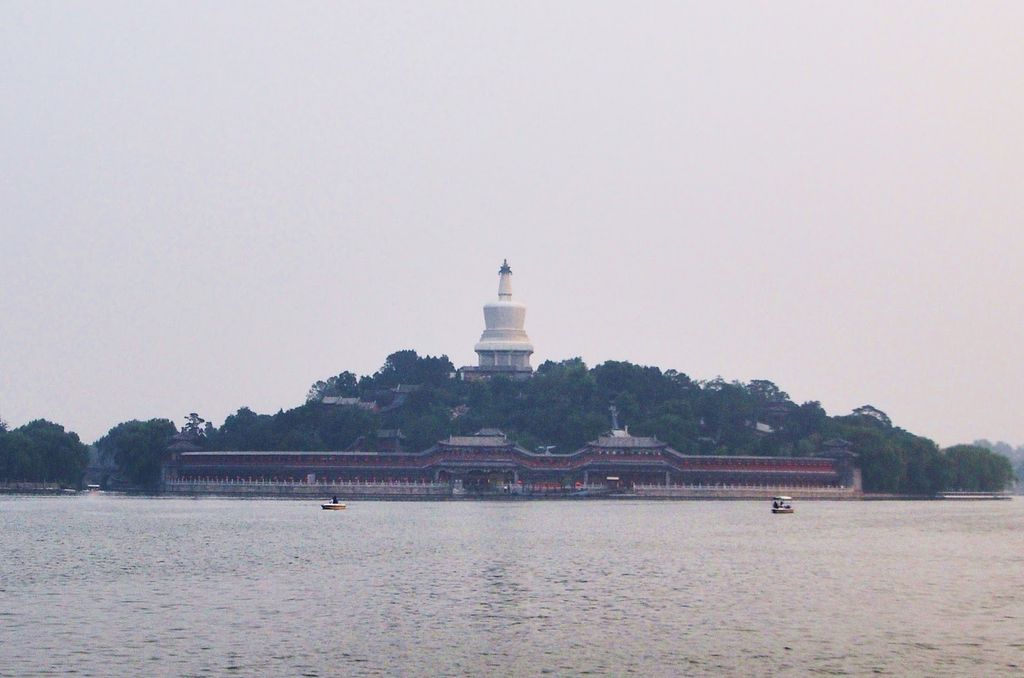
Beihai Park (Source: Google Maps)
Beihai Park, one of the oldest and most well-preserved imperial gardens in China, dates back to the 11th century and showcases traditional Chinese landscape design. The park features a large lake, a white dagoba, and lush gardens, creating a picturesque setting for relaxation and exploration. The central lake, covering over 100 acres, is surrounded by pathways, pavilions, and historical structures that reflect the grandeur of imperial gardens. Beihai Park has served various purposes throughout history, including as a royal retreat and a site for cultural gatherings. The park's architecture, including the iconic White Dagoba, symbolizes the harmonious relationship between man and nature. Today, visitors can enjoy boating on the lake, strolling through the gardens, and experiencing traditional Chinese culture in this serene oasis amidst the bustling city.
Prince Gong's Mansion
This well-preserved Qing Dynasty mansion and garden offer insight into the opulent lifestyle of imperial China.

Prince Gong's Mansion (Source: Google Maps)
Prince Gong's Mansion, a well-preserved Qing Dynasty estate, offers a glimpse into the opulent lifestyle of imperial China. Built in the 18th century, it served as the residence of Prince Gong, a prominent figure in the Qing court. The mansion features exquisite traditional architecture, including intricate woodwork, beautiful courtyards, and lush gardens, showcasing the artistic craftsmanship of the era. The layout of the mansion reflects the principles of feng shui, designed to bring harmony and prosperity. Visitors can explore the various halls and gardens, each with historical significance and unique architectural features. The mansion also houses a museum that provides insights into the life of the prince and the cultural practices of the time, including tea ceremonies and traditional festivities. Prince Gong's Mansion stands as a testament to China's rich history and the grandeur of its royal families.
Houhai Lake
A lively area known for its scenic lakes, traditional hutong alleys, and vibrant atmosphere, Houhai Lake offers a glimpse into local life and culture.
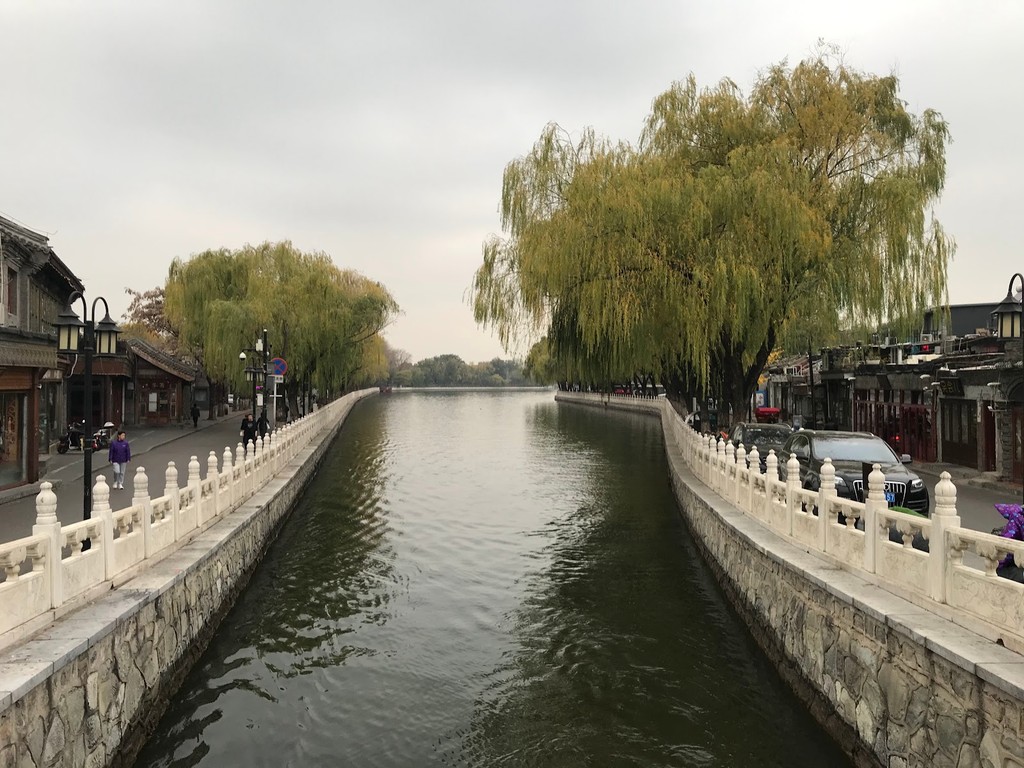
Houhai Lake (Source: Google Maps)
Houhai Lake is a vibrant area known for its scenic lakes, traditional hutong alleys, and lively atmosphere. Surrounded by historic buildings and charming cafes, the lake area is a popular destination for both locals and tourists. Historically, Houhai was part of the imperial gardens, serving as a retreat for the emperors. Today, it is a hub of cultural activity, with numerous bars, restaurants, and shops lining the waterfront. Visitors can enjoy boat rides on the lake, explore the narrow alleys of the hutongs, and experience the local lifestyle. The area hosts various cultural events and festivals throughout the year, celebrating Beijing's rich heritage. The picturesque setting, combined with the lively ambiance, makes Houhai Lake a must-visit destination for anyone wanting to experience the heart of Beijing's culture and community.
Nanluoguxiang
A historic hutong alley, Nanluoguxiang is famous for its traditional architecture, boutique shops, and local eateries, providing a charming end to your tour.
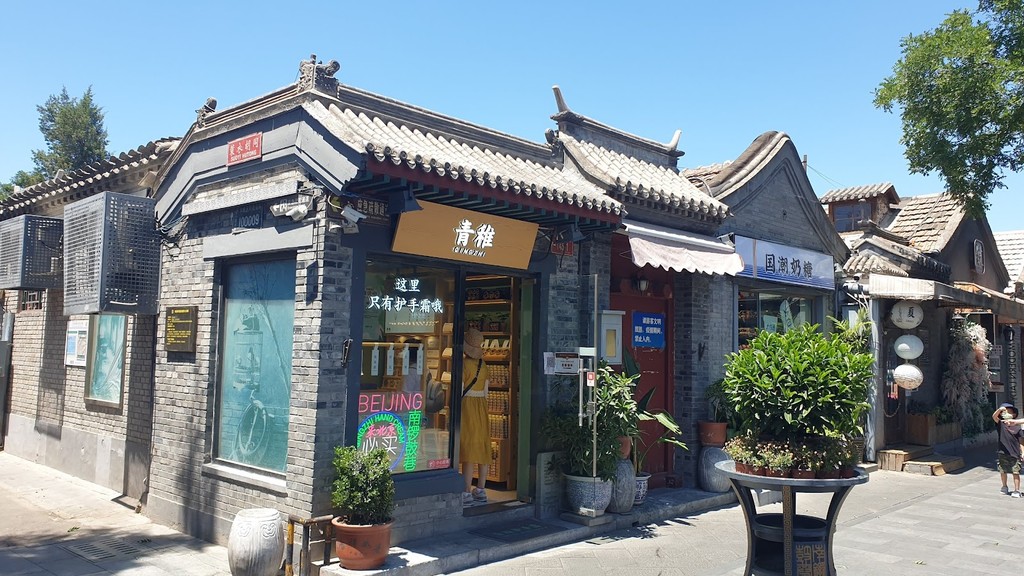
Nanluoguxiang (Source: Google Maps)
Nanluoguxiang, a historic hutong alley, is famous for its traditional architecture, boutique shops, and local eateries. Dating back to the Yuan Dynasty, this picturesque alley offers a glimpse into Beijing's past, with its well-preserved courtyard houses and narrow pathways. The area has transformed into a vibrant cultural hub, attracting visitors with its unique blend of history and modernity. Here, you can find an array of shops selling handmade crafts, clothing, and souvenirs, alongside cafes and restaurants offering delicious local cuisine. Nanluoguxiang is also known for its vibrant street art and cultural events, making it a lively destination for young people and tourists alike. The charm of the alley lies in its ability to retain its historical essence while embracing contemporary culture, providing a delightful end to your exploration of Beijing.
Confucius Temple and Imperial College
Just a short walk from Nanluoguxiang, this site is dedicated to Confucianism and education, featuring tranquil courtyards and ancient architecture.
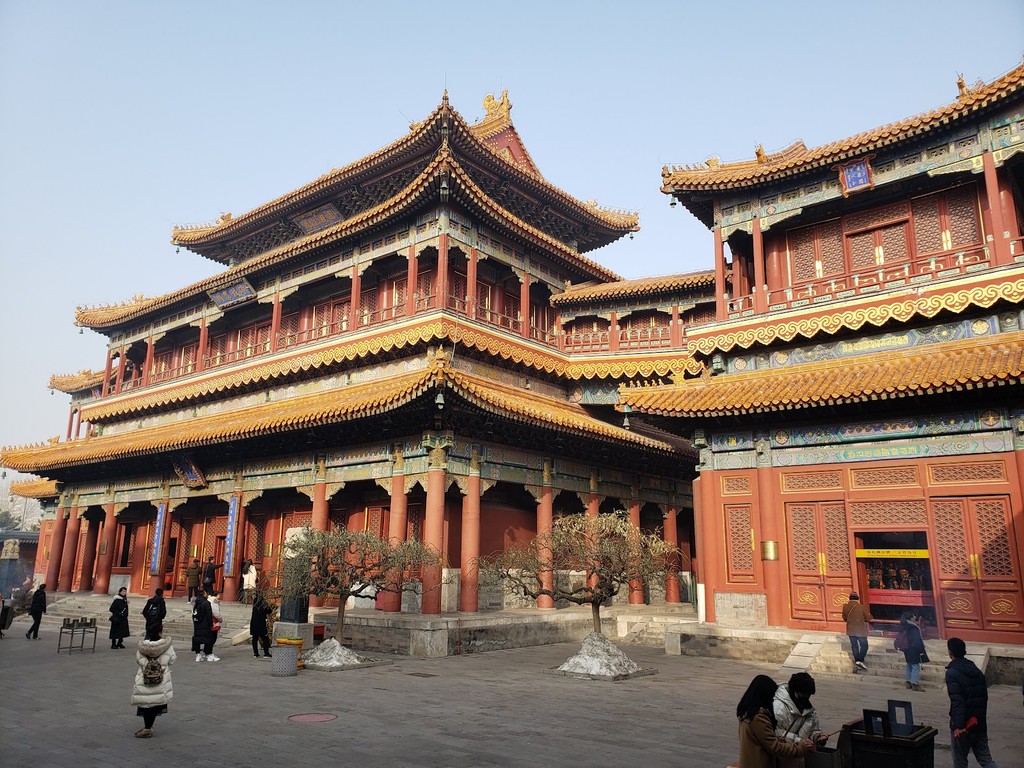
Confucius Temple and Imperial College (Source: Google Maps)
The Confucius Temple and Imperial College, located close to Nanluoguxiang, is a site dedicated to Confucianism and education. Established in the 14th century, the temple served as a place of worship and study, reflecting the importance of Confucian ideals in Chinese society. The complex features tranquil courtyards, ancient trees, and traditional architecture, creating a serene atmosphere for reflection and learning. The temple houses numerous stone tablets inscribed with the names of scholars who passed the imperial examinations, highlighting the significance of education in Chinese culture. The Imperial College, adjacent to the temple, was the highest institution of learning in ancient China, training scholars for government service. Today, the site serves as a historical landmark, attracting visitors interested in Confucian philosophy and the evolution of education in China.
Yonghe Temple (Lama Temple)
Conclude your tour at the Yonghe Temple, a stunning Tibetan Buddhist temple known for its vibrant decorations and spiritual ambiance.

Yonghe Temple (Lama Temple) (Source: Google Maps)
Yonghe Temple, also known as the Lama Temple, is a stunning Tibetan Buddhist temple renowned for its vibrant decorations and spiritual ambiance. Established in the 17th century, it originally served as a residence for a prince before being converted into a temple. The architecture showcases a harmonious blend of Han Chinese and Tibetan styles, featuring intricate carvings, colorful murals, and magnificent statues, including a giant Maitreya Buddha carved from a single sandalwood tree. The temple complex consists of several halls and courtyards, each dedicated to different deities and teachings. Visitors can experience the peaceful atmosphere, participate in traditional rituals, and learn about Tibetan Buddhism's rich cultural heritage. Yonghe Temple remains an important site for worship and meditation, attracting both locals and tourists seeking spiritual solace and cultural enrichment.

Your travels, your rules.
Create your own Free Walking Tours.
Set your preferences, distances and anything you want to do or see.
Completely free, no payment required.